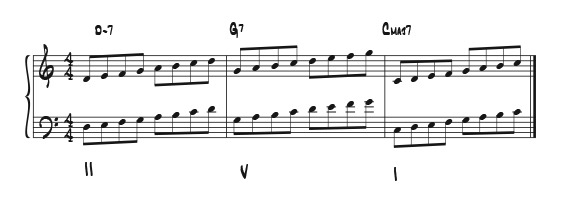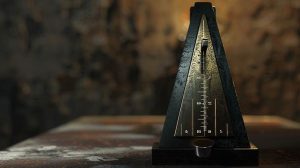
The Benefits of the Ear to Instrument Connection
I recently watched a video performance by the amazing classical pianist Yuja Chang. I’ve seen her memorizing motion and heard her virtuosic playing before, but something hit me after seeing
Categories:
Categories:
I received an email this morning from an enthusiastic sax player struggling to get better at playing jazz. He has started working with my book Jazz Patterns for Ear and wrote, “After playing the exercises in the book, I played a standard tune and immediately felt closer to the things I was playing”. He said that ” my theoretical, analytical knowledge and the learning of finger movement is extremely highly developed while my ear is somewhere lost in the Stone Age.” He asked where he should start in order to improve his jazz playing.
His email, like many others I often get, described his lack of a developed jazz ear as some sort of affliction. He wonders if he will ever improve. “I am constantly feeling there is some sort of barrier I am not able to overcome.”

The feeling that improvisation is overwhelmingly hard
Music is an aural art form. It makes sense therefore that improving your skill at improvisation should start with developing your ear. Like any skill, however, improving your ear takes time and requires that you spend that time in the most effective way possible.
One way to improve your ear is to play jazz with others for hours each day for years as the masters did in their day. They didn’t have jazz education or books linked to audio files. They learned their craft by playing all day and night with their peers.
Playing with others is a critical part of your development, but you may not have that opportunity to do it on a regular basis and to play with players who are skilled enough to speed your development. Back in the day, Dave Liebman lived in the same New York building and therefore played every day for hours with Chick Corea, Dave Holland, and others.
So how else can you effectively work on your ear? I’ll give you three strategies.
How will you know that this is working? You will start to sense your instrument going in the direction of your imagined music. You will sense what the musician I mentioned at the beginning said about feeling closer to the things he was playing.
Others who follow my method say that they feel a closer connection to their instrument. This is your objective: to feel a connection between your musical mind and your instrument.

It probably seems like an easier route to playing jazz if you simply play the scales associated with each chord, right? When you see G7, you’ll just run C major scale and like adding the box of potato flakes to water, Viola! you have instant mashed potatoes.
And if all you want is to ‘sound’ like a jazz player running flurries of notes, my way of getting to that is much too difficult. Just memorize some cool patterns and licks from other players between scale runs and you will sound like a jazz player.
But deep inside, you know that the instant mashed potatoes lack that real potato taste. It’s flat and is missing the goodness of the earth and the authentic taste of the potato root.
The art of improvisation is in the projection and amplification of your personal music through your instrument. As I mentioned earlier, you are projecting the music of your soul. Richie Beirach refers to the process as Heart-Ear-Hands. An emotion is felt and is translated into a sound in your inner musical ear which is played through your hands.
When you hear Richie or any other master improvise, you are hearing the music inside their soul, not the memorized scales, patterns, and licks that they quilt together to sound like they are playing jazz. They ARE playing jazz. They are composing deeply personal music in real-time.
If THAT is the jazz playing you wish for yourself, there is no box of instant improvisation you can add to water. Sorry.
Developing your ear takes time, but it is the only way to start improvising jazz well so that you can stand up and confidently play the music true to yourself.

Trombonist, author, marketer, & tech guy
Share this post…

I recently watched a video performance by the amazing classical pianist Yuja Chang. I’ve seen her memorizing motion and heard her virtuosic playing before, but something hit me after seeing

I have created a AI chatbot called Jazz Master Chat that draws from 75 hours of interviews from my Jazz Master Summit event a couple of years ago. I interviewed

What is jazz improvisation? Let’s first define what I mean by jazz improvisation. Jazz improvisation is a spontaneous conversation, but instead of words, we use notes. Look at two possible

My recently turned 18-year old son is a passionate photographer. He’s got himself a little business where people pay

A couple weeks ago I sent Richie Beirach a YouTube clip from the movie Whiplash as a bit of

I originally meant to write this as a reply to a comment Richie Beirach wrote on my blog. But

Tools for helping musicians at all levels learn about jazz and play to their full capability.
Web design and marketing by:
Michael Lake @JazzDigitalMarketing.com
This is just a fake book example for the type of website I can build for you. Just trying to use a little humor here!
1 thought on “How to get started with jazz improvisation”
Thanks for all of your help and advice